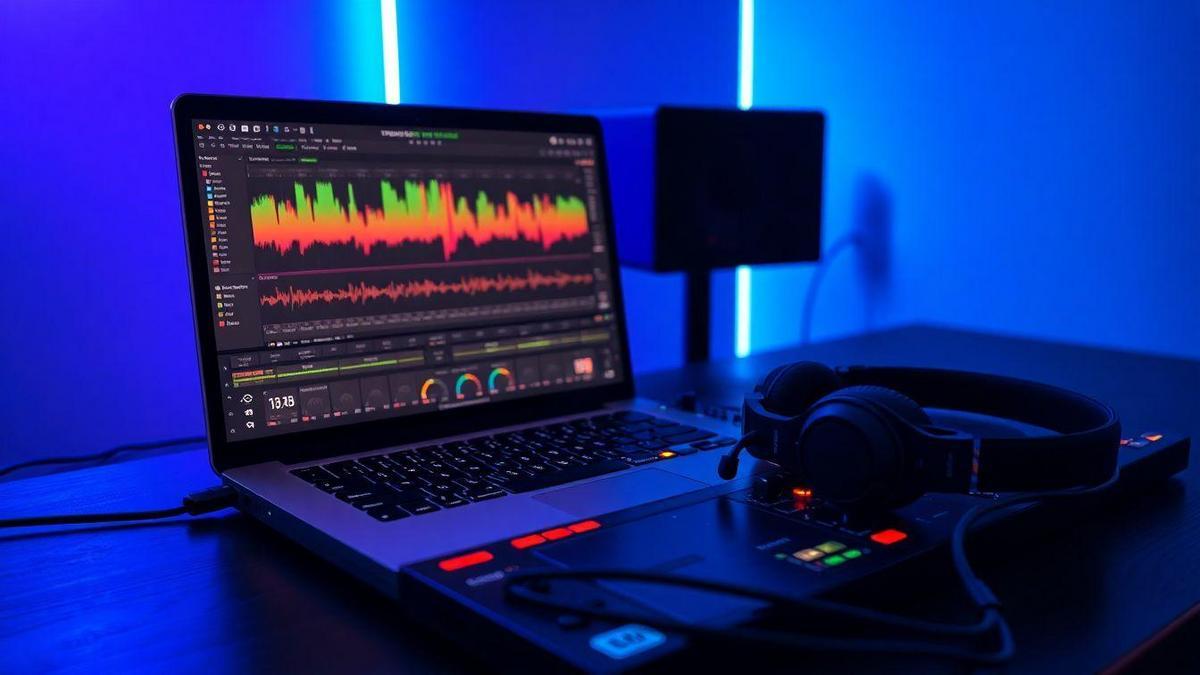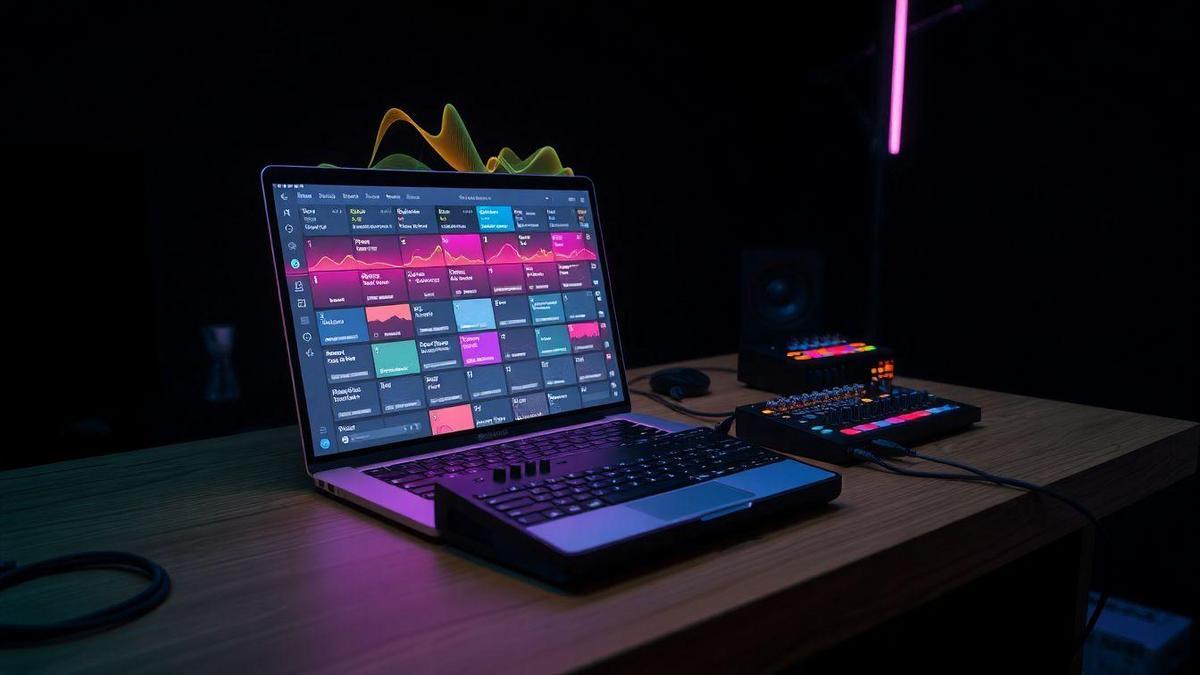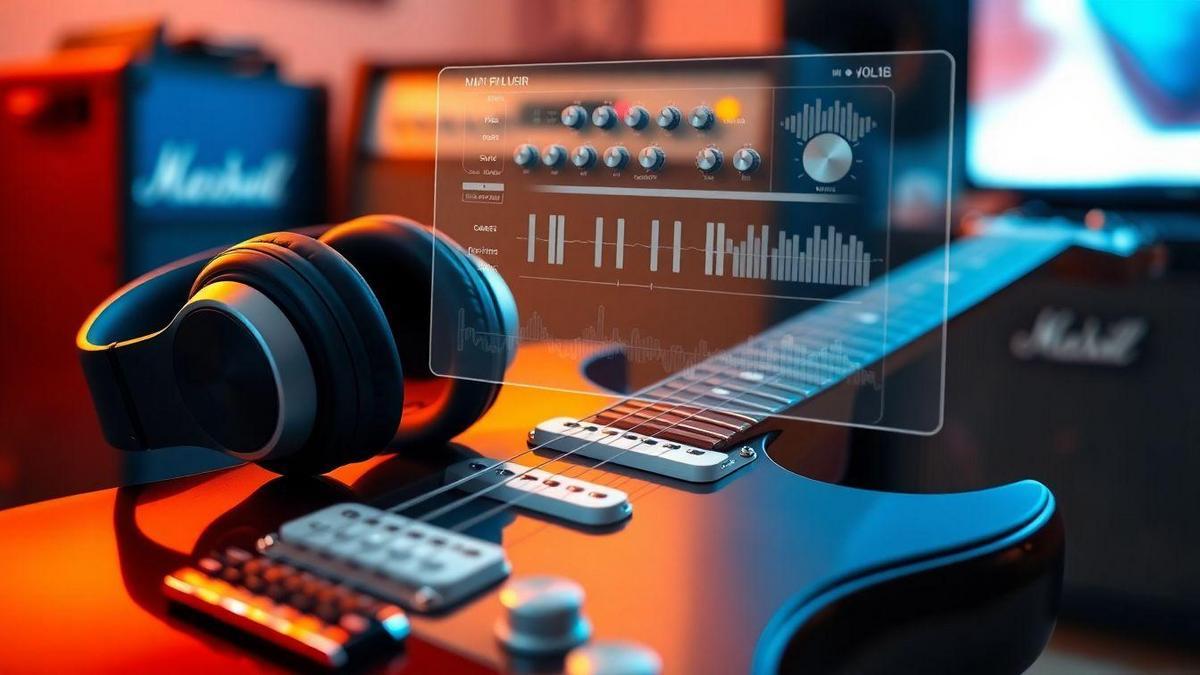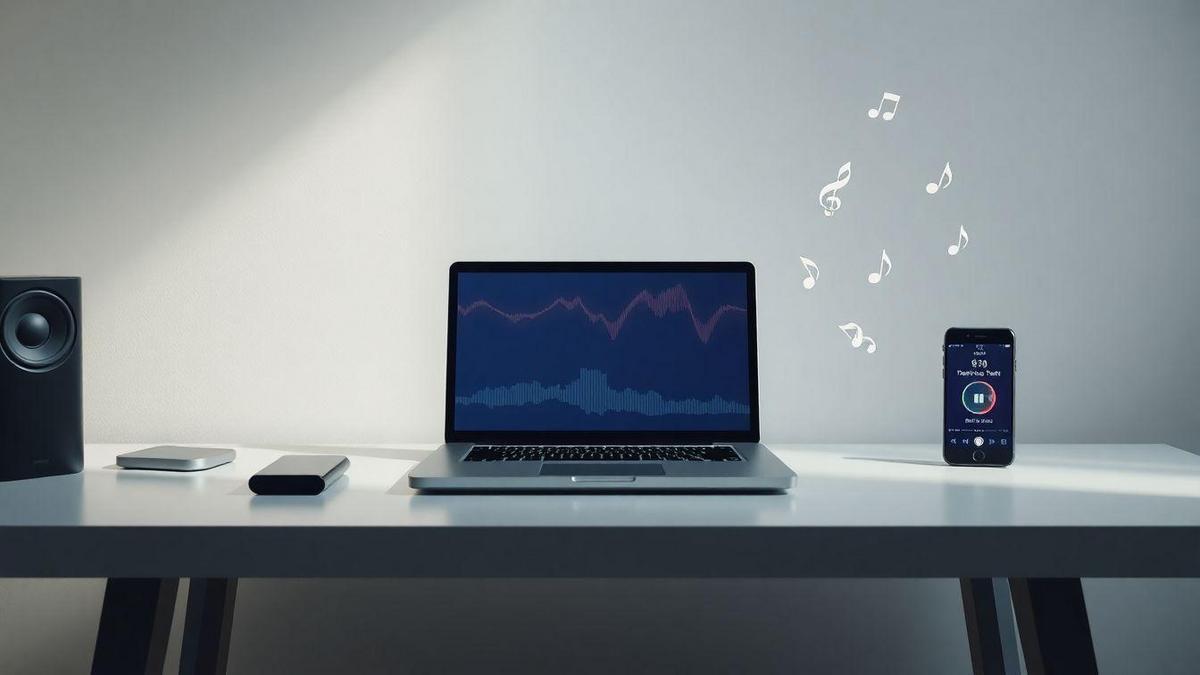loop library subscription services for electronic producers with royalty free licensing can change how you make music and help you finish tracks faster. They save you time and spark new ideas. Sambizanga Musik shows you what matters for your workflow: clear guides on WAV, AIFF, stems, DAW-ready tricks, and simple royalty-free rules. This piece helps beginners, home producers, and creators of African and diasporic music pick the right service with easy tutorials, tools, and a handy checklist.
Key Takeaway
- Sambizanga Musik gives you loop packs made for FL, Ableton, and Logic
- You save money and get more sounds than buying single packs
- You get loops you can use and sell, so you can put out your music
- You speed up your work by dropping ready beats and samples into your songs
- You learn easy tips and African-style sounds to make your music unique
- When comparing loop library subscription services for electronic producers with royalty free licensing, prioritize clear licensing, DAW integration, and cultural authenticity
Why loop library subscription services for electronic producers with royalty free licensing matter for your workflow
You want fast ideas and solid sounds without legal headaches. These services give a steady stream of ready-made building blocks so you can sketch a beat, drop in a melody, or layer percussion in minutes instead of hours. For a home studio or late-night session, that speed keeps momentum and creativity alive.
Subscription libraries widen your sonic palette with curated collections and genre-tagged searches that point you to Afrobeat claps, vintage synth loops, or modern club basslines. If African or diasporic sounds are part of your identity, pick a library that respects those rhythms—relevant samples cut your learning curve and make tracks sound authentic.
Clear royalty-free licensing saves stress at release time. Good subscriptions spell out what you can and cannot do with loops so your releases stay clean and playable worldwide. In short: faster workflow, richer ideas, and cleaner rights equal more music that gets out into the world.
How subscriptions speed up production and boost your inspiration
Instant access to thousands of sounds is gold when you’re finishing a track. Audition loops at tempo, drop them into your DAW, and hear ideas take shape in real time. New packs arriving regularly nudge you to try rhythms and textures you wouldn’t otherwise, breaking writer’s block. Sambizanga Musik focuses on practical packs and tips that nudge beginners to remix, flip, and make material their own.
Common subscription models and file formats like WAV, AIFF and stems
Most services use one of a few models: monthly/annual access, credit-based downloads, or lifetime packs. Choose the model that matches how often you release and how many new sounds you use.
File formats matter:
- WAV / AIFF — full-quality loops and one-shots; best for editing and processing
- Stems — separated parts (kick, bass, vocals) for remixing and cleaner mixes
- MIDI — change notes and instruments without audio editing
- MP3 — smaller files for quick previews but not ideal for final mixes
Tip: Always check tempo, key, and whether stems are included before downloading—this tiny step saves hours later.
| Subscription model | Best for | Typical advantage |
|---|---|---|
| Monthly/Annual access | Producers who want variety | New packs, unlimited browsing |
| Credit/download packs | Selective users | Pay only for what you use |
| Lifetime packs | One-off investment | Permanent ownership of a pack |
What royalty-free licensing usually lets you do with releases and sync
Royalty-free usually means you can use loops in commercial releases, streams, and sync deals without paying extra per play. You can sell tracks and get sync placements, as long as you don’t resell raw loops as-is or claim the sample is your original recorded performance. Read the short license note—some services ask for credit or limit sample resale. Sambizanga Musik points you toward libraries with clear, user-friendly terms.
Who benefits most from a loop library subscription for electronic producers
A subscription saves hours of hunting for samples and fiddling with presets. If you want ready-made building blocks that play well in your DAW, a subscription with royalty-free licensing is a time-saver and a legal safe bet—especially when you search for loop library subscription services for electronic producers with royalty free licensing.
Many makers find loops act like a teacher: drop a loop in, reverse-engineer the arrangement, and copy techniques that work. Over time you’ll remix, chop, and morph loops into something that sounds like you. Subscriptions also stretch creativity without blowing your budget.
Who usually benefits most: beginners, home studio producers, self-taught beatmakers, and producers focused on African and diasporic styles.
| User type | Main win | Quick example |
|---|---|---|
| Beginner | Faster results, guided learning | Drop a drum loop and learn song structure |
| Home studio producer | More polished demos, less gear time | Use pro bass loops instead of buying synths |
| Self-taught beatmaker | New palettes and tricks | Chop an Afrobeat loop into a fresh groove |
| Cultural music producer | Authentic timbres, curated packs | Add traditional percussion without field recording |
How beginners, home studio producers and self-taught beatmakers gain time and learning
Loops free you from programming every hi-hat and clap—letting you focus on arrangement, melody, or lyrics. Finishing more tracks is the fastest way to level up. You also learn practical skills by copying and tweaking loops: slowing, pitching, and chopping teaches compression, EQ, tempo matching, and creative editing. Sambizanga Musik mixes short tutorials with sample packs so you can practice exact moves.
Producers of African and diasporic music who need authentic palettes
If you make Afrobeat, Highlife, Amapiano, or other diasporic styles, authentic sounds matter. Curated packs built by knowledgeable producers capture swing, microtiming, and the correct tonal character. Good packs show how to use patterns, which instruments sit where, and the proper tempos. Sambizanga Musik provides packs plus notes so you can use loops respectfully and creatively.
How Sambizanga Musik supports you with tutorials, tools and sample pack advice
Sambizanga Musik offers step-by-step guides, short project videos, and clear sample-pack tips so you learn while you make. We point you to the right loops, show simple edits, and explain how to stay legal and creative with loops and samples.
Sambizanga Musik: practical tips, real examples, and support so you can make music that sounds like you. Let’s Grow Together.
How to evaluate loop library subscription services for electronic producers with royalty free licensing
Think like a producer, not a shopper. List what you need: DAW compatibility, clear licensing, audio quality, genre focus (techno, house, Afro-house), and search tools that save time. Sambizanga Musik helps you spot traps—missing stems, unclear redistribution rules, or loops mixed down too heavily for reuse—so you spend less time guessing and more time making.
Test the service hands-on using trials or single downloads to drop loops into a simple project. If loops warp poorly, keys don’t match, or previews hide artifacts, that library isn’t worth your subscription.
A good service speeds you up: fast key/BPM tags, stem exports, and clear royalty-free terms. Choose a library that feels like a partner in your creative process. Quick checklist:
- Fast search by key and BPM
- High-quality previews and full files (no hidden downsamples)
- Clear commercial licensing and stem options
- Genre-rich packs and cultural sounds
Check DAW compatibility, search tools and preview options
Make sure loops load cleanly into your DAW. Drag-and-drop WAVs that line up with Ableton, FL Studio, Logic, etc., save time. MULTI-track stems or sliced loops speed arranging and remixing. If you must re-grid every file, that’s time wasted.
Search tools are your secret weapon: filters by key and tempo, waveform previews, and loop-length indicators. High-quality audition features that play loops in context save you more time than isolated previews.
Compare audio quality, sample rate, bit depth and genre variety
44.1 kHz / 16-bit is baseline; 48 kHz or 96 kHz and 24-bit give headroom for processing. If you plan heavy time-stretching, higher sample rates and 24-bit depth preserve clarity. Prefer libraries that supply both full mixes and dry stems for flexibility.
Genre variety matters. If you make techno or house, look for authentic drum grooves, modular synth loops, and scene-appropriate percussion. Cross-pollination—Afro-house percussion or lo-fi textures—can spark fresh ideas.
Licensing checklist: commercial use, stem rights and redistribution limits
Check the license like it’s your production budget. Confirm you can use loops in commercial releases, whether stems are cleared for sale, and if there are limits on redistribution. Look for one-click license statements and readable examples of allowed vs. forbidden uses; vague legalese is a red flag.
Quick tip from Sambizanga Musik: always save a copy of the license or screenshot the terms the day you download.
How to integrate and manipulate DAW-ready loop libraries for electronic music
Make loops feel like they belong in your track, not pasted on top. Organize downloads into folders by tempo, key, and vibe. If you use loop library subscription services for electronic producers with royalty free licensing, tag what you download immediately so you can search fast later.
Import loops as audio or drag them into a sampler. Warp tempo or match BPM before arranging. Work in small sections: create a looped phrase, copy and vary it. Layer percussion with a chopped top loop and a resampled bass hit to make something new. Keep a clean project structure: color-code tracks, label takes, and keep bounced stems in a dedicated folder for reuse.
Mapping loops to samplers, chopping, re-sequencing and layering techniques
Mapping loops to a sampler turns one audio piece into playable material. Detect transients, slice at beat points, assign slices across keys, and set velocity ranges for dynamic control. Save a multisample instrument for later use.
Steps:
- Detect transients and set slice points
- Map slices across keys or pads
- Set velocity layers and loop points
- Create round-robin zones for variation
- Save a multisample instrument for later use
Chopping and re-sequencing creates new patterns. Reverse a slice for surprise, layer a dry slice with a filtered, delayed copy for width. Slice one loop into a drum kit and play it for an hour—you’ll learn more than many tutorials teach.
Pitch and tempo warping, resampling and creating multisample loop instruments
Choose warp algorithms that match material: transient-preserve for drums, formant-preserve for vocals. Small pitch shifts change mood—always audition in context. Resample processed loops to lock in changes and save CPU, then chop the bounce into new slices or map it across a sampler. For multisample loop instruments, record several pitch/velocity variants and name zones clearly.
Plugins and samplers to use: Kontakt, Simpler, NN-XT and common VST workflows
Kontakt is great for deep multisampling and scripting; Simpler is fast for Ableton Live users; NN-XT fits Reason’s workflow. Use lightweight samplers when sketching and switch to Kontakt or a heavy sampler for the final instrument. Preprocess in your DAW, map in the sampler, then add performance controls (LFO, filter, ADSR).
| Sampler / Plugin | Best for | Quick tip |
|---|---|---|
| Kontakt | Detailed multisamples, scripting | Use groups and round-robin for realism |
| Simpler (Ableton) | Fast slicing and performance | Use Slice mode then map to pads |
| NN-XT (Reason) | Classic mapping in Reason | Use velocity layers for dynamics |
| Generic VST Sampler | Quick sketching | Resample often to save CPU |
Mixing, mastering and home studio setup tips for tracks using loop library subscriptions
Treat each loop as an instrument. Carve space with EQ rather than adding more sounds. A gentle high-pass on non-bass loops and small cuts around 200–400 Hz clears mud fast. When you use loop library subscription services for electronic producers with royalty free licensing, you still need to make loops fit your groove and sonic stamp.
Think dynamics and context: use compression to glue repeated loops and match their energy to your drums. Light bus compression helps a loop sit with your beat. For dance styles, sidechain the pad or bass to the kick. Transient shaping can restore life to flattened loops. Mix in steps and listen on different systems.
Home setup matters: a quiet room and basic monitors reveal problems you can fix. Build simple templates so loops drop in and route to groups for fast mixing. Backups keep downloads from ending your session when drives fail.
Sambizanga Musik: Practical tips for makers. Save your time. Learn real moves. Contact: contato@sambizangamusik.com
EQ, compression, sidechain and transient shaping
Start with EQ: cut narrow bands first when a loop fights vocals or synths. Use high-pass on rhythmic loops that don’t need low end. Use compression and sidechain to control energy—slow attack for glue, fast attack to tame transients. Add transient shaping when you need snap without heavy compression.
Organizing your loop library, templates, backups and managing unlimited downloads
Keep a folder plan you actually use. Name folders by genre, BPM, key, and mood. Tag files with simple notes like hat loop 120bpm C#. Create DAW templates with tracks and routing already set. Back up locally and to the cloud. For unlimited download subscriptions, use a To Review folder and move approved loops to an Approved folder with license notes.
Quick steps:
- Create main folders: To Review, Approved, By Genre, By BPM
- Add a simple text note per loop with source and license
- Save DAW templates with group channels for loops, drums, and FX
- Back up monthly to cloud and external drive
Budget gear that helps: audio interfaces, monitors and headphones
You don’t need a Rolls-Royce setup to mix loops well. A simple interface with clean preamps and low latency, flat-ish monitors, and reliable headphones make a big difference. Cheap acoustic treatment changes what you hear.
| Gear | Type | Approx Price (USD) | Best for |
|---|---|---|---|
| Focusrite Scarlett Solo (3rd Gen) | Interface | $120 | Simple recording, low latency |
| PreSonus Eris E3.5 | Studio Monitors | $100/pair | Small rooms, clear mids |
| Audio-Technica ATH-M50x | Headphones | $150 | Punchy, reliable reference |
Pros, cons and a quick pre-signup checklist for loop subscription services
Subscriptions are a buffet of sounds: constant fresh loops, new genres, and tool-ready packs that keep tracks moving. For beginners and self-taught producers, subscriptions are great for experimenting without buying many one-off packs.
Trade-offs: fees add up and access often depends on staying subscribed, which can bite if you build a hit around a loop you can’t keep. Too many options can slow decision-making—don’t browse when you should finish.
Before subscribing, think about long-term plans. Use the checklist below.
Sambizanga Musik: grow your skills with clear, no-hype advice — pick tools that help you finish tracks.
Subscription vs one-time sample pack purchase: access, cost and file ownership
A subscription gives wide access for a low monthly fee—great for exploring multiple styles. One-time packs give permanent ownership and full control. If you plan to keep many loops, compare subscription cost over time to one-time purchases.
| Aspect | Subscription | One-time sample pack |
|---|---|---|
| Access | Large, rotating library | Limited, fixed set |
| Upfront cost | Low monthly fee | Higher one-time price |
| File ownership | Often access-tied | You own the files forever |
| Updates | Regular new releases | No new content after purchase |
| Best for | Explorers, beatmakers | Producers who want permanent assets |
Choosing services: curated loop packs for techno, house and synth loops
Look for providers that curate packs by scene and workflow. For techno and house, find DJ-ready, club-ready, or studio-ready packs with tight drums and basses. For hybrid tracks with African rhythms, check for percussion kits and polyrhythms. For synth loop subscriptions, prioritize clear labeling, multiple formats (WAV, 24-bit), stems, MIDI files, and DAW project templates.
Quick checklist before you subscribe
- License type and restrictions (royalty-free? limits on sync or resale)
- File formats and bit depth (WAV, AIFF, 24-bit, included MIDI)
- Free trial or money-back window
- Cancellation terms and whether downloads remain yours after cancelling
- Breadth of genre libraries and any specialized packs you need
Find loop library subscription services for electronic producers with royalty free licensing — read the license line by line before you press pay.
Subscription vs One-time — Quick Visual Comparison
.label{font:12px sans-serif; fill:#333;}
.title{font:14px sans-serif; font-weight:600; fill:#111;}
.axis{stroke:#ddd; stroke-width:1;}
Subscription vs One-time: Access, Cost (over time), Ownership
Access
Subscription (High)
One-time (Low)
Cost (over time)
Subscription (Rising over time)
One-time (Single higher)
Ownership
Subscription (Limited)
One-time (Permanent)
Conclusion
A loop library subscription can be your fastest route from idea to release. It gives speed, variety, and legal peace of mind—so you finish more tracks and learn faster. Pick libraries with clear royalty-free terms, high-quality WAV/AIFF and stems, and good DAW integration. Treat loops like ingredients, not shortcuts: organize, tag, chop, and resample. Use the checklist, follow licensing rules, and let a fresh loop act as the spark for your next track.
Ready to keep learning? Head over to https://sambizangamusik.com for more guides, packs, and practical tips to sharpen your workflow and finish more music.
Frequently Asked Questions
- What is a loop library subscription and how will it help my music?
It gives access to curated loops and samples so you get fresh sounds fast. Sambizanga Musik picks loops that help you finish tracks.
- Are Sambizanga Musik loops royalty-free?
Yes. Sambizanga Musik offers loop library subscription services for electronic producers with royalty free licensing. You can use the loops without extra fees or sample clearance (follow the license).
- Can I use the loops in commercial releases and sell beats?
Yes. You can release tracks, stream, and sell beats made with our loops. Follow the simple license rules on our site.
- Which DAWs and formats work with the loops?
WAV and AIFF files work everywhere. They load into FL Studio, Ableton Live, Logic Pro X and more. Drag, drop, and tweak.
- How do I choose the right subscription plan for my studio?
Try monthly to test. Go annual to save and get more packs. Need help? Email contato@sambizangamusik.com or DM @sambizangamusik.








